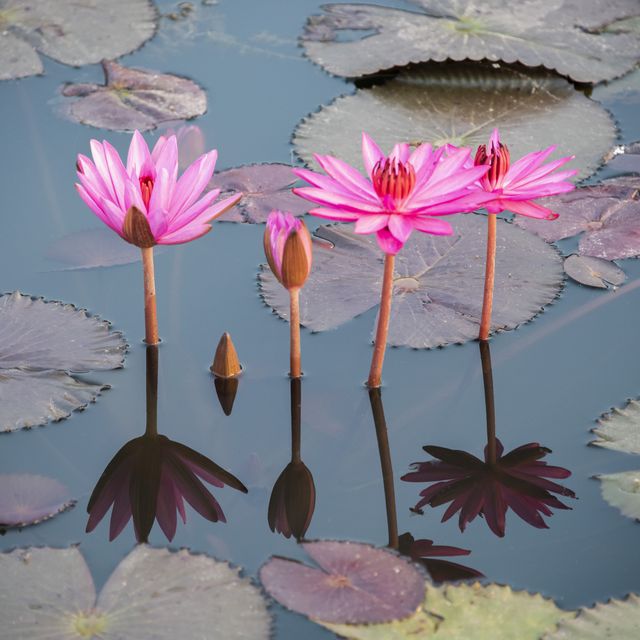A lotus flower may not seem like much to think about at first glance, but first impressions can be misleading. While the plant's symmetry and colors are surely striking, beneath the delicate exterior of a lotus lies a deeper meaning nearly as old as time. In many Eastern cultures the lotus holds great symbolic weight and is considered one of the most sacred plants in the world. So, what is it about this specific bloom that makes it oh so special?
First and foremost, the lotus has a life cycle unlike any other plant. With its roots latched in mud, it submerges every night into river water and miraculously re-blooms the next morning, sparklingly clean. As a result, this has led the lotus to have associations as the flower with rebirth and spiritual enlightenment. With its daily process of life, death, and reemergence, it's no wonder that the lotus holds such symbolism.
Because of these attributions, the lotus is often seen alongside divine figures in some cultures. For the Egyptians, the flower represents the universe. In Hindu culture, it is said that gods and goddesses sat on lotus thrones. And a longstanding Buddhist story states that the Buddha appeared atop a floating lotus, and his first footsteps on Earth left lotus blossoms
The flower of rebirth was once thought to contain magical properties as well, as if it is as divine as the Gods it has come to represent. The ancient Egyptians believed lotuses had the ability to resurrect the deceased, as seen in Book of the Dead transformation spells.
Each flower color also has its own symbolism. For Buddhist practitioners, a white lotus symbolizes purity, whereas a yellow lotus is associated with spiritual ascension. However, the real question remains: how has the flower acquired such all-encompassing spiritual significance?
The lotus flower's daily resurrection is certainly interesting, and surely symbolic of revival a characteristic that makes the bloom the perfect gift for anyone recovering from injury or a traumatic experience. But the flower also has a fascinating will to live. A lotus seed can withstand years without water, able to germinate over two centuries later.
The flower also blooms in the most unlikely of places such as the mud of murky river water in Australia or Southern Asia. Not only does it find sanctuary in the muck, but due to the waxy protection layer on its petals, its beauty is blithely unaffected when it re-blooms each morning. It continues to resurrect itself, reemerging just as beautifully as it was last seen. With such refusal to accept defeat, it's almost impossible not to associate this flower with unwavering faith. Although cultures have largely dubbed the lotus as a spiritual figurehead, it is most emblematic of the faith within ourselves. It is particularly what the Buddhist proverb, aims to edify; living life with unwavering faith, as the lotus does, ensures the most beautiful revivals.














